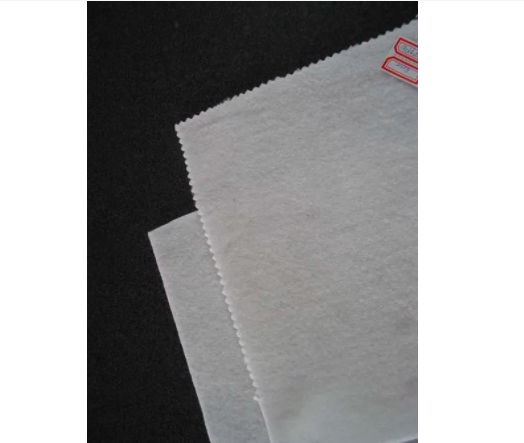- Understanding the Role of Geomembrane Liners in Waste Management
- Innovations in Geomembrane Liners for Water Management
- Geomembrane Liners: A Comprehensive Guide
- The Future of Geomembrane Liners in Civil Engineering
- Geomembrane Liners: Enhancing Landfill Stability
Manager:
WhatsApp:+86 177 0135 2670
Tel:+86 177 0135 2670
Email:marketing@okorder.com
Address:3rd Floor, No.2 Building, No.1 Sanlihe Road
The Versatility of Geotextile Non-Woven: A Deep Dive into Its Applications and Impact
In the complex world of construction and civil engineering, the unsung heroes are often the materials that hold structures together without the pomp or show. One such material is the geotextile non-woven, a versatile fabric that plays a silent but crucial role in a myriad of applications. From reinforcing soil to ensuring proper drainage, this synthetic marvel is a staple in the engineer’s toolkit. Let me unlayer this material while examining its relevance in modern engineering practice.
The Fabric of Engineering: An Introduction to Geotextiles
Geotextiles are permeable fabrics that occur as integral parts of soil, rock and other objects used for reinforcement, separation or filtering in civil engineering projects. They are typically made from polypropylene, polyethylene and polyester which guarantee durability and resistance to environmental degradation. Among all types of geotextiles available on the market today, non-wovens have a special place due to their unique properties and wide range of applications.

Woven vs. Non-Woven: A Tale of Two Fabrics
As we talk about geotextiles it is common to meet two major categories; woven and non-woven ones. woven geotextiles are formed by weaving narrow strips of film thereby giving them high tensile strength with plastic-like feel. This makes them ideal for reinforcement and separation although they lack permeability hence not suitable for use in drainage systems.
On the other hand non-wovens are made through needle-punching process that gives them felt-like texture (Amadu et al., 2019). They are defined by weight and consequently have more permeability making them perfect for filtration as well as drainage purposes. When water management matters then these are usually preferred over others.
The Needle and the Thread: Crafting Non-Woven Geotextiles
Non-woven geotextiles are produced through a manufacturing process that involves the joining of short and long synthetic fibers by needle punching. This technique makes it possible to get a fabric that has high flow-through rate thus allowing water and air to pass through while keeping soil particles in place. The product is not only strong but also elastic, and flexible under natural conditions.
A Stitch in Time: Applications of Non-Woven Geotextiles
The applications for non-woven geotextiles differ greatly depending on the environments they are used to safeguard. Some of these uses include:
In the Foundation: Soil Reinforcement and Stabilization
To reinforce soil, non-woven geotextiles increase its load-bearing capacity so as to prevent distortion. This can be important particularly in areas with poor ground conditions or where buildings are going up on soft or unstable ground.
Water Management: Filtration and Drainage
One key purpose of non-woven geotextiles is water management. They act as a barrier which prevents migration of soil particles into drainage systems while letting water pass through without any hindrance. In road construction, this feature helps maintain drainage systems from being clogged with water resulting damage.
Separation of Worlds: Separating Dissimilar Materials
In order to keep different types of matter such as concrete from mixing together during construction activities thereby threatening the functionality of structures, separation becomes necessary. These materials become an effective barrier that keeps such items apart (Amadu et al., 2019).
A Brave Against Nature: Erosion Control
Erosion is an invisible threat to the life of many structures. Non-woven geotextiles act as a protective wall, shielding slopes and embankments against erosive agents like water and wind.
The German Connection: Innovative Uses in Pavement Construction
Nonwoven geotextiles are used in Germany as interlayers in concrete pavements. This method has been practiced for over 25 years and involves placing the geotextile between the surface of the pavement and cement-stabilized base course. It serves to separate layers, reduce water penetration, lower bearing stresses. The Federal Highway Administration (FHWA) in the United States has taken note of this practice and has conducted field trials to adapt it for use in American pavement construction.
A Touch of Green: Environmental Applications
Besides, non-woven geotextiles contribute significantly to environmental undertakings. They are employed in landfills so that they can protect geomembranes from being destroyed which ensures long term stability of waste containment facilities. In addition, we apply them in landscaping with a view to creating microclimates for optimal plant growth thus reducing costs on water as well as fertilizer requirements.
The Human Touch: Personalizing the Engineering Marvel
As broad as its applications are, it is through human imagination that geotextile non-wovens come alive. Engineers weave it with their hands into the fabric of our infrastructure while construction workers do so with their minds. Their meticulousness; knowledge about material properties; and creativity make possible worldwide performance by these silent performers – geotextile non-wovens.
Weaving the Future: The Role of Geotextile Non-Woven in Sustainable Engineering
In looking ahead at sustainable engineering practices, there is expected to be increased application of geotextile non-woven materials across various uses. With global emphasis on eco-friendly construction techniques using materials that have less environmental impact, non-woven geotextiles provide a solution that is both efficient and accountable.
In Conclusion: A Fabric Interwoven with Our World
Finally, the geotextile non-woven is more than just a material; it is also an epitome of human innovation and the adoption of technology for improving infrastructure and environment. This versatile fabric’s applications are likely to continue soaring as we push the boundaries of what it can do, hence further embedding it in our world’s fabric. Therefore, whenever you drive on good road or pass by stable slopes, recall this unpretentious hero below your feet – geotextile non-woven.
- Previous:Unseen Heroes in the Construction Industry: Nonwoven Geotextiles.
- Next:Geotextile Road Fabric and Infrastructure






